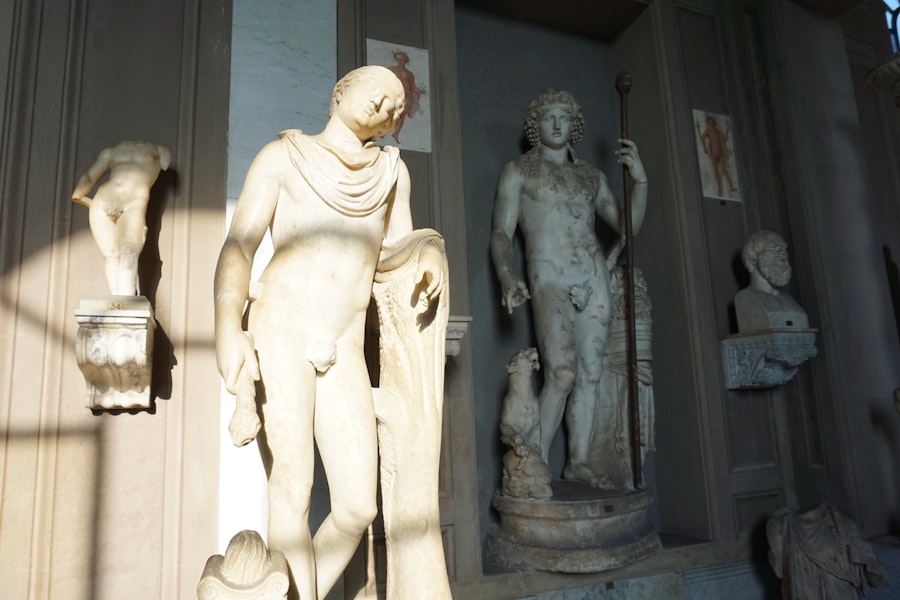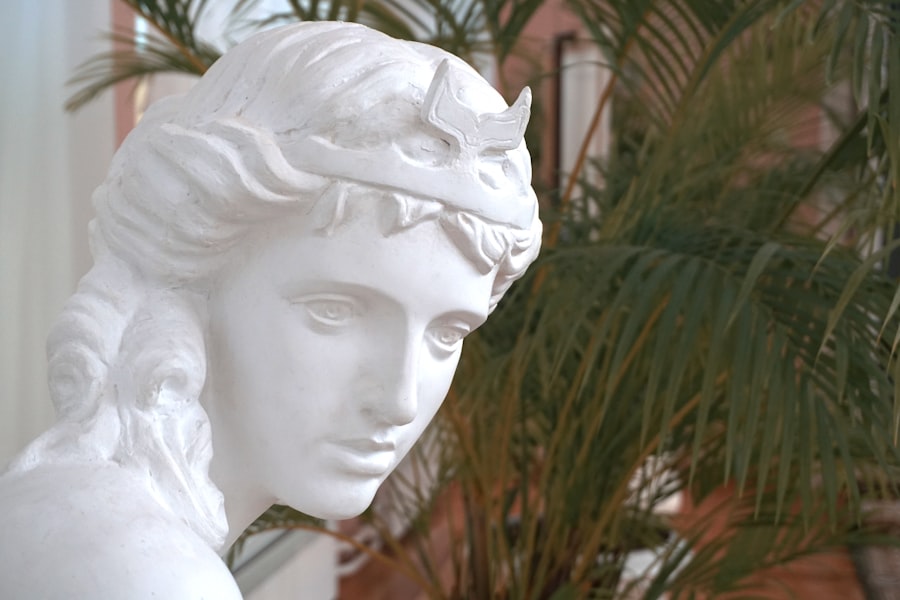The evolution of Indian art and architecture is a testament to the rich cultural tapestry woven through centuries of history, marked by the influence of various dynasties. Among these, the Sunga, Satavahana, and Kushana styles stand out as significant contributors to the artistic heritage of ancient India. The Sunga dynasty, which emerged around the 2nd century BCE, is often credited with the revival of Indian art following the decline of the Mauryan Empire.
This period saw a flourishing of Buddhist art, particularly in the form of stupas and sculptures that depicted the life of the Buddha and various Jataka tales. Following the Sungas, the Satavahana dynasty rose to prominence around the 1st century BCE and continued until approximately the 3rd century CE. This era is characterized by a blend of indigenous and foreign influences, particularly from the Hellenistic world due to trade routes that connected India with the Mediterranean.
The Satavahanas played a crucial role in promoting art that reflected both local traditions and external influences, leading to a unique style that incorporated elements from various cultures. The Kushana dynasty, which succeeded the Satavahanas in the 1st century CE, further enriched Indian art with its cosmopolitan approach. The Kushanas are known for their patronage of Buddhism and the development of Gandhara art, which combined Indian themes with Greco-Roman artistic techniques.
Key Takeaways
- The Sunga, Satavahana, and Kushana styles are significant periods in Indian art and architecture, each with its own unique characteristics and influences.
- The Sunga style is known for its use of stone and wood in architecture, as well as the development of the stupa and the rock-cut caves.
- The Satavahana style is characterized by its intricate carvings, use of narrative sculptures, and the construction of gateways and pillars.
- The Kushana style is marked by its incorporation of Hellenistic and Roman artistic elements, such as the use of Corinthian columns and realistic human figures.
- When comparing the three styles, it is evident that each period contributed distinct artistic elements and cultural significance to Indian art and architecture, showcasing the diversity and evolution of artistic expression in the region.
Characteristics of Sunga Style in Indian Art and Architecture
The Sunga style is primarily recognized for its contributions to Buddhist art, particularly in the construction of stupas and the intricate carvings that adorned them. One of the most notable examples is the Great Stupa at Sanchi, which features elaborate reliefs depicting scenes from the life of Buddha and various Jataka tales. The Sunga period emphasized narrative art, where stories were conveyed through visual means, allowing for a deeper engagement with religious themes.
The sculptures from this era are characterized by their naturalism and attention to detail, showcasing a shift from the more austere forms of earlier periods. In addition to narrative reliefs, the Sunga style is marked by its use of decorative motifs and floral patterns that adorned architectural elements. The pillars and gateways of stupas often featured intricate carvings of animals, foliage, and geometric designs, reflecting a deep connection to nature and spirituality.
The craftsmanship during this period was exceptional, with artisans employing techniques that allowed for a high degree of realism in their sculptures. The portrayal of human figures became more dynamic, with an emphasis on movement and expression, which was a significant departure from previous artistic conventions.
Influences and Features of Satavahana Style in Indian Art and Architecture

The Satavahana style is distinguished by its synthesis of indigenous Indian artistic traditions with influences from foreign cultures, particularly those stemming from Hellenistic Greece. This cross-cultural exchange was facilitated by trade routes that connected India with regions as far as the Mediterranean. As a result, Satavahana art exhibits a unique blend of styles, characterized by both local motifs and elements borrowed from Greco-Roman art.
This is evident in the sculptures that depict not only Buddhist themes but also secular subjects such as royal figures and everyday life. One of the hallmark features of Satavahana art is its use of narrative reliefs that tell stories through visual representation. The Amaravati Stupa is a prime example where intricate carvings illustrate scenes from Buddhist texts, showcasing a high level of craftsmanship and attention to detail.
The figures are often depicted in graceful poses, reflecting a sense of movement and fluidity that was influenced by Hellenistic sculpture. Additionally, the Satavahana period saw the introduction of new iconographic elements, such as the depiction of Bodhisattvas alongside traditional representations of Buddha, indicating a shift towards more complex religious narratives.
Artistic Elements and Cultural Significance of Kushana Style in Indian Art and Architecture
The Kushana style is renowned for its remarkable artistic achievements, particularly in sculpture and architecture. This period marked a significant evolution in Buddhist art, with an emphasis on realism and emotional expression.
This synthesis resulted in sculptures that displayed intricate drapery, detailed facial expressions, and a sense of three-dimensionality that was unprecedented in earlier Indian art. The cultural significance of Kushana art extends beyond its aesthetic qualities; it reflects the cosmopolitan nature of the Kushana Empire, which encompassed vast territories across northern India and parts of Central Asia. The patronage of Buddhism during this period led to the proliferation of monasteries and stupas adorned with exquisite sculptures.
The famous standing Buddha statues from Gandhara exemplify this style, showcasing not only religious devotion but also an understanding of human anatomy and proportion that was influenced by contemporary Hellenistic practices. The Kushana period also saw the emergence of new iconographic forms, such as Avalokiteshvara and Maitreya, which enriched the Buddhist pantheon.
Comparison of Sunga, Satavahana, and Kushana Styles in Indian Art and Architecture
When comparing the Sunga, Satavahana, and Kushana styles, one can observe distinct differences in their artistic approaches while also recognizing their interconnectedness. The Sunga style is primarily focused on Buddhist themes with an emphasis on narrative reliefs that convey moral lessons through visual storytelling. In contrast, the Satavahana style introduces a broader range of subjects beyond religious themes, incorporating secular narratives that reflect daily life and royal patronage.
This expansion signifies a shift towards a more inclusive representation of society within art. The Kushana style stands apart due to its cosmopolitan nature and its integration of foreign artistic influences. While both Sunga and Satavahana styles exhibit regional characteristics rooted in Indian traditions, Kushana art represents a more global perspective shaped by interactions with diverse cultures along trade routes.
The realism achieved in Kushana sculptures contrasts with the more stylized forms seen in earlier periods. Furthermore, while Sunga art emphasizes decorative motifs and floral patterns, Kushana art showcases intricate drapery and detailed anatomical features that reflect a deeper understanding of human form.
Legacy and Impact of Sunga, Satavahana, and Kushana Styles on Indian Art and Architecture

The legacy of Sunga, Satavahana, and Kushana styles continues to resonate within Indian art and architecture today. The innovations introduced during these periods laid foundational principles that would influence subsequent generations of artists. The narrative techniques developed during the Sunga period can be seen echoed in later Buddhist art forms across Asia, where storytelling through visual means became a hallmark of religious expression.
Moreover, the Satavahana style’s blending of indigenous and foreign elements set a precedent for future artistic endeavors in India. This synthesis would be revisited during later dynasties such as the Gupta Empire, which further refined these artistic traditions while maintaining their core principles. The Kushana style’s emphasis on realism and emotional depth has had a lasting impact on Indian sculpture, inspiring artists to explore human expression in their works.
In conclusion, the contributions made by these three dynasties have shaped not only Indian art but also influenced cultural exchanges across Asia. Their artistic legacies serve as reminders of India’s rich historical narrative—a narrative characterized by diversity, innovation, and an enduring quest for beauty through art.
If you are interested in learning more about the rich natural beauty of Botany Bay, you may enjoy reading an article on com/rich-natural-beauty-of-botany-bay/’>Botany Bay that explores the diverse flora and fauna found in this stunning location.
This article provides a fascinating look at the unique plant life that thrives in this area, offering insights into the importance of preserving our natural environment.
FAQs
What are Sunga, Satavahana, and Kushana Styles?
Sunga, Satavahana, and Kushana Styles are the distinct artistic styles that emerged during the rule of the Sunga, Satavahana, and Kushana dynasties in ancient India.
What are the characteristics of Sunga Style?
The Sunga Style is known for its emphasis on intricate carvings, especially in the form of railings and gateways of Buddhist stupas. It also features the use of symbols and motifs related to Buddhism.
What are the characteristics of Satavahana Style?
The Satavahana Style is characterized by its focus on rock-cut architecture, particularly in the form of caves and monolithic stupas. It also incorporates intricate relief sculptures and decorative motifs.
What are the characteristics of Kushana Style?
The Kushana Style is known for its blend of Hellenistic and Indian artistic elements, particularly seen in the depiction of Buddha and Bodhisattvas. It also features the use of Gandhara and Mathura schools of art.
How did these artistic styles contribute to Indian art and culture?
These artistic styles played a significant role in the development of Indian art and culture, particularly in the context of Buddhist and Hindu religious architecture and sculpture. They also reflect the cultural and artistic exchanges that took place during ancient India’s interactions with other civilizations.






















+ There are no comments
Add yours